Related Research Articles
The history of Guatemala begins with the Maya civilization, which was among those that flourished in the region. The country's modern history began with the Spanish conquest of Guatemala in 1511.
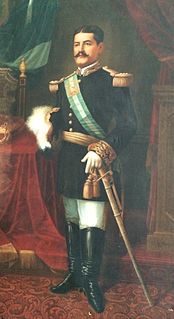
José María Reyna Barrios was President of Guatemala from 15 March 1892 until his death on 8 February 1898. He was born in San Marcos, Guatemala and was nicknamed Reynita, the diminutive form, because of his short stature.

Manuel José Estrada Cabrera was President of Guatemala from 1898 to 1920. He was a lawyer with no military background and as President, he was a strong ruler, who modernised the country's industry and transport, but only by granting concessions to the American-owned United Fruit Company, whose influence on the government was felt by many to be excessive. Estrada Cabrera used increasingly brutal methods to assert his authority, including armed strike-breaking, and the general elections were effectively controlled by him. He retained power for 22 years through controlled elections in 1904, 1910, and 1916, and was eventually removed from office when the national assembly declared him mentally incompetent, and he was jailed for corruption.

José Rafael Carrera Turcios was the president of Guatemala from 1844 to 1848 and from 1851 until his death in 1865, after being appointed President for Life in 1854. During his military career and presidency, new nations in Central America were facing numerous problems: William Walker's invasions, liberal attempts to overthrow the Catholic Church and aristocrats' power, the Civil War in the United States, Mayan uprising in the east, Belize boundary dispute with England, and the wars in Mexico under Benito Juarez. This led to a rise of caudillos, a term that refers to charismatic populist leaders among the indigenous people. Many regional and national caudillos were interested in power for their own gain. Carrera was an exception as he genuinely took the interests of Guatemala's Indian majority to heart.
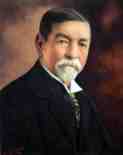
José María Reina Andrade was the acting President of Guatemala from 2 January 1931 to 14 February 1931.

Carlos Herrera y Luna was acting President of Guatemala from March 30, 1920 to September 15, 1920 and President of Guatemala from September 16, 1920 until December 10, 1921.

Manuel Lisandro Barillas Bercián was a Guatemalan general and acting president of Guatemala from 6 April 1885 to 15 March 1886 and President from 16 March 1886 to 15 March 1892. He was born in Quetzaltenango, and assassinated in Mexico City in 1907.

Salamá is a city in Guatemala. It is the capital of the department of Baja Verapaz and it is situated at 940 m above sea level. The municipality of Salamá, for which the city of Salamá serves as the administrative centre, covers a total surface area of 764 km² and contains 65,275 people.

The Universidad de San Carlos de Guatemala is the largest and oldest university of Guatemala; it is also the fourth founded in the Americas. Established in the Kingdom of Guatemala during the Spanish colony, it was the only university in Guatemala until 1954.
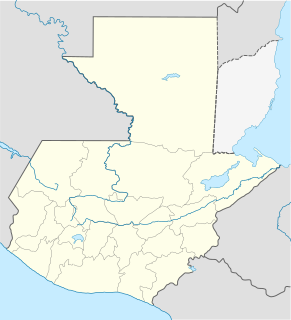
Nuevo Progreso is a municipality in the San Marcos department of Guatemala.

Guatemala, officially the Republic of Guatemala, is a country in Central America bordered by Mexico to the north and west, Belize and the Caribbean to the northeast, Honduras to the east, El Salvador to the southeast and the Pacific Ocean to the south. With an estimated population of around 17.2 million, it is the most populated country in Central America. Guatemala is a representative democracy; its capital and largest city is Nueva Guatemala de la Asunción, also known as Guatemala City.

Lorenzo Montúfar y Rivera was a Guatemalan politician and lawyer. Superb leader and speaker, helped the liberal regime of Justo Rufino Barrios, served in the Guatemalan legislature, taught in the College of Law of the Universidad Nacional de Guatemala and, towards the end of his life, was a presidential candidate himself losing to general José María Reyna Barrios. He was also Foreign Secretary of Costa Rica in 1856 and from 1870 to 1873, and President of University of Saint Thomas, also in Costa Rica.

Indirect presidential elections were held in Guatemala on 8 April 1920. After two decades of repression and dictatorial rule, political opponents of Manuel Estrada Cabrera organized the Unionist Party (PU) in 1919. Led by Conservatives tied to the landed oligarchy, the Unionists also attracted support among the urban proletariat, artisans, students, and industrialists.

The Carrera Theater -also called Colón Theater after the Liberal Reform of 1871– was a majestic classic Greek style theater built by president Captain General Rafael Carrera y Turcios in Guatemala City, Guatemala in 1852. The building was in the Old Central Square and after the liberal revolution of 1871 it was called National Theater. Towards the end of general Manuel Lisandro Barillas Bercián government, the building was remodeled to celebrate the Discovery of America fourth centennial anniversary. Finally, the theatre was destroyed by the earthquakes of 1917–18 and demolished in 1923.

Natalia Górriz de Morales was a Guatemalan teacher, pedagogue, and the founder of the Instituto Normal Central para Señoritas in 1888. In 1892, the government of General José María Reina Barrios promoted her to the post of Inspector General of Girls' Schools in Guatemala City. She wrote a book dedicated to Christopher Columbus in honor of that year's fourth centenary of his landing. Her teaching career was put on hold when she married Próspero Morales, in 1894, but after his death in 1898, she started teaching again.

Rafael Spínola was a writer, journalist, politician and public speaker from Guatemala. Director of the well known cultura magazine La Ilustración Guatemalteca in 1896 and 1897, was Secretary of Infrastructure in Manuel Estrada Cabrera first presidential term. He also created the "Fiestas Minervalias", which were a celebration to the studious youth and the president Estrada Cabrera rule. He was also the one that signed the treaty granting the American company "The Central American Improvement Co. Inc." to finish the Northern Railroad -which had been left unfinished after president José María Reina Barrios assassination on 8 February 1898–, which would be the stepping stone for the operations of the United Fruit Company in Guatemala. He was the father of Guatemalan poetesse Magdalena Spínola (1896–1991).

Antonio Macías del Real (1866–1939) was a Spanish writer and pharmacist that moved to Guatemala where he wrote for most prestigious cultural publications. Among his articles are those that we wrote for La Ilustración Guatemalteca during the last year of general José María Reina Barrios presidency. When the president was assassinated on 8 February 1898, Macías del Real wrote Perfiles biográficos de don Manuel Estrada Cabrera (Biographical profiles of Mr. Manuel Estrada Cabrera, who had been appointed as interim President; Macias del Real kept writing on behalf of the new president since then. In 1902 his adulation paid off, as Estrada Cabrera granted him the Pacific Railroad concession. According to Guatemalan historian Rafael Arévalo Martínez in his book ¡Ecce Pericles!, Macías del Real -a pharmacist graduated from Universidad Central de Madrid and later incorporated in Guatemala- was the one that gave Estrada Cabrera a potent venom that the latter used to get rid of his opponents.
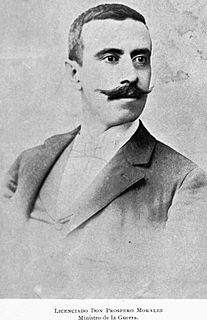
Próspero Morales was a Guatemalan lawyer who served as Secretary of Infrastructure, War and Public Instruction during José María Reina Barrios administration. Two year after being in office, Morales married the well known Guatemalan teacher Natalia Górriz. Morales resigned as Secretary on 5 March 1897 in order to run for president for the upcoming presidential elections; however, due to the failure of the Exposición Centroamericana and the severe economic crisis that Guatemala was undergoing at the time, due to the plummeting of coffee and silver international prices, general Reina Barrios suspended the elections and forcibly extended his tenure until 1902. Morales then joined the revolution that was brewing in Quetzaltenango, but the rebels were defeated on 14 September 1897. After Reina Barrios assassination on 8 February 1898, he unsuccessfully tried to overthrow interim president Manuel Estrada Cabrera–who also had served as Secretary under Reina Barrios–but was repelled by the forces of former president Manuel Lisandro Barillas.

Algeria Benton de Reyna Barrios was the First Lady of Guatemala and wife of President José María Reyna Barrios. Benton married Reina Barrios on May 17, 1886, at the consulate of Guatemala in New York, whose consul was Enrique Toriello.
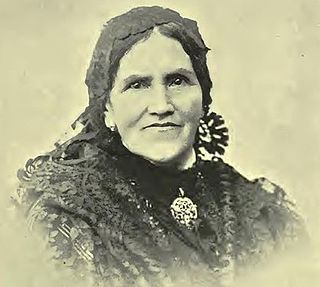
Celia Barrios Mazariegos de Reina was the mother of President José María Reina Barrios and the 1st First Mother of Guatemala, and the sister of President Justo Rufino Barrios.